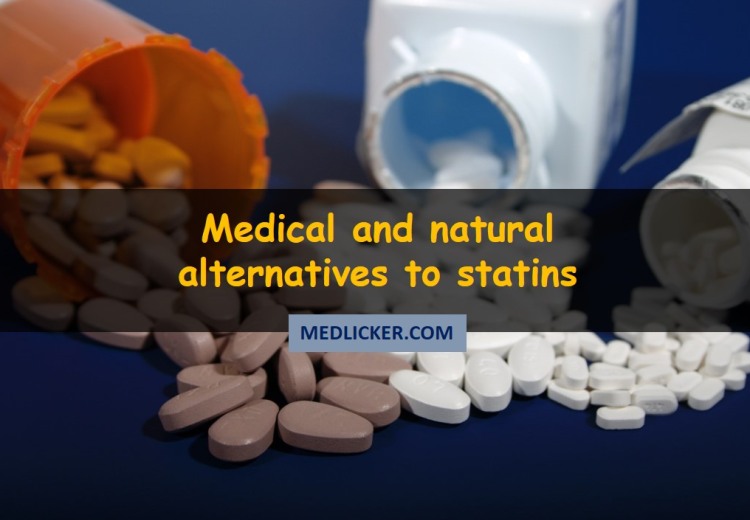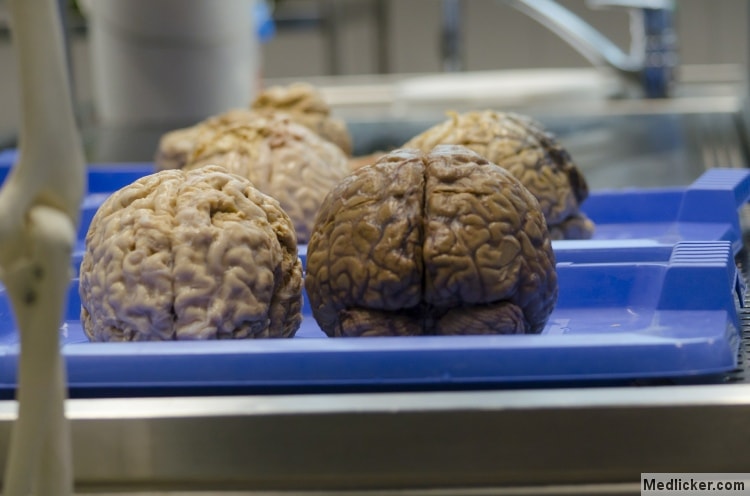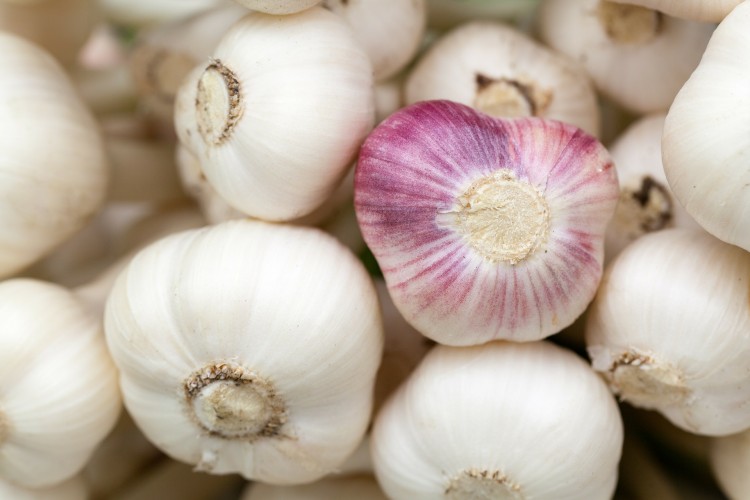What are statins?
Statins are also known as HMG-CoA reductase inhibitors as they are medications that lower lipid levels and inhibit the activity of enzyme HMG-CoA reductase, which has a key role in the production of cholesterol (1). Abnormally raised cholesterol levels have been linked with cardiovascular disease. Statins have been found to decrease severity of cardiovascular disease and mortality in those who are at high risk (2). Solid research has proven that statins are highly effective for treating heart disease in the initial stages (secondary prevention) and in those at eminent risk but without cardiovascular disease (3).
How do statins work?
Statin drugs exert their effect by hampering the action of the liver enzyme that has chief role in producing cholesterol. Excess of cholesterol in the blood can cause an accumulation of plaque on the walls of vessels. This buildup can eventually cause the arteries to harden or constrict. Serious blood clots in these constricted arteries can cause cardiac arrest or stroke. Statins reduce levels of LDL cholesterol and overall cholesterol levels (4, 5). Simultaneously, they decrease triglycerides and increase HDL cholesterol levels. These drugs may also help to alleviate plaques in the vessels. That makes occurrence of heart attack less probable (6, 7).
If you keep up a healthy lifestyle while taking a statin, it can perk up the efficacy of this drug for you (8). While taking this drug, make sure to:
- Have a balanced, heart friendly, healthy diet
- Exercise regularly and change your sedentary lifestyle
- Reduce alcohol consumption
- Abstain from smoking
Side effects of statins
Most people who use statin drugs tolerate them quite well. But some patients may experience adverse effects. The most commonly observed side effects are (9, 10, 11):
- Insomnia
- Headache
- Flushed, reddish skin
- Myalgia, muscle ache, tenderness and weakness
- Fatigue and drowsiness
- Dizziness
- Vomiting or nausea
- Pain and cramps in abdomen
- Gas or bloating in stomach
- Constipation
- Diarrhea
- Rash
Statins also come with warnings that mental confusion, memory loss, raised blood sugar levels, and type 2 diabetes are possible side effects (9).
Statins rarely cause serious side effects. Serious adverse effects of stains are (11):
- Myositis, inflammation and tenderness of muscles. The possibility of muscle injury is raised when some other drugs are taken with statins. For instance, if you take a combination of a fibrate and a statin – a different cholesterol lowering medication -- the danger of muscle damage is increased greatly compared to someone who takes statin on its own.
- Raised levels of creatine kinase or CPK - a muscle enzyme that when increased can trigger muscular pain, light inflammation, and muscle weakness. This situation, though infrequent, can take a long time to heal.
- Statin use may cause rhabdomyolysis, a condition in which there is extreme muscle inflammation and damage. In this condition, muscles of the whole body become tender and weak. The rigorously damaged muscles discharge proteins into blood that accumulate in the kidneys. Renal damage may occur as kidneys try to abolish a large amount of muscle debris caused by statin use. This can eventually lead to renal failure or even death. Luckily, rhabdomyolysis is an extremely rare condition. It happens in less than one in 10,000 people using statins.
Statin warning signs
If you feel any unexplained muscle or joint pain, weakness, or tenderness while using statins, you should inform your doctor immediately. Pregnant women or patients with chronic or active liver disease should not use statins. If you are about to use a statin drug, tell your doctor about your current drug intake information whether they are over the counter or prescription drugs or herbal supplements or vitamins. Spill the guts and tell your doctor about every single medication and supplement you take.
Difference between various statins
There are many ways in which statin drugs differ from each other (12).
- One of the variations is potency and the capability to decrease cholesterol plasma levels. Rosuvastatin (Crestor) and atorvastain (Lipitor) are the strongest statins with respect to lowering LDL, after that simvastatin (Zocor) and pravastatin (Pravachol) are the strongest.
- Another difference is that how each statin reacts with other drugs; this is due to drug metabolism. Among the statins, neither rosuvastatin (Crestor) nor pravastatin (Pravachol) undergo extensive CYP450 metabolism, and are most likely to cause muscle damage such as myopathies, myalgia and inflammation of the muscles brought on by raised plasma levels and subsequent reactions with other drugs.
- In patients suffering from renal disease, dosages of lovastatin (Mevacor), pravastatin (Pravachol), Altocor, simvastatin (Zocor) and rosuvastatin (Crestor) should be attuned to avert increased plasma concentration. No adjustment is required for atorvastatin (Lipitor) or fluvastatin (Lescol).
- The statins vary in their capacity to cause side effects. Skeletal muscle harm such as rhabdomyolysis may take place when particular drugs are given with statins which brings about an increase in the concentration of statins. Cerivastatin (Baycol) was removed from medical stores and pharmacies over the world because it caused rhabdomyolysis ten to hundred times more frequently than other statins.
Medical alternatives to statins
Ezetimibe
If it is not possible for you to take statins due to your medical or drug history, your doctor may recommend a different medicine to lower high cholesterol. Ezetimibe is a widely used alternative drug and it is a cholesterol absorption inhibitor (13).
Cholesterol absorption inhibitor (CAI) prevents your small intestine from fully absorbing the cholesterol you ingest. If it can’t be absorbed from small intestine, it will not reach your blood stream. The only one CAI drug available at pharmacies is ezetimibe or Zetia. This medicine can be taken concurrently with statins to give fast output. But generally many doctors prescribe ezetimibe on its own and pair it with a low-fat diet to help lower cholesterol.
Ezetimibe is a medicine that reduces plasma cholesterol levels (14). Its action takes place by diminishing cholesterol uptake in the small intestine. It may be used alone (brand names Zetia or Ezetrol) when other cholesterol-lowering medications such as statins cause adverse reactions, or combined therapy with statins (such as ezetimibe/simvastatin combination, marketed as Vytorin and Inegy) when statins alone are not effective enough to lower cholesterol.
Ezetimibe is prescribed as second line treatment option for those who can’t bear side effects of statins or are not able to achieve optimal LDL cholesterol levels by statins alone by medical professionals.
How ezetimibe works?
Ezetimibe reduces the uptake of cholesterol from the small intestine and reduces the amount of cholesterol generally available to hepatic cells, causing them to absorb more from blood stream and thus decreasing levels of circulating cholesterol (14). The exact process is yet undetermined, but it appears that ezetimibe inhibits the activity of the critical mediator of cholesterol absorption, the Niemann-Pick C1-like 1 (NPC1L1) protein present on the GIT tract epithelial cells as well as in liver cells; blocks aminopeptidase N, and interferes with action a Caveolin 1-Annexin A2 complex engaged in transporting cholesterol.
Indications of ezetimibe
Ezetimibe is prescribed in the United States as an addition to dietary measures to (15):
- Lower levels of cholesterol and certain lipids in people with primary hyperlipidemia, alone or in conjunction with a statin;
- Lower levels of some lipids in people with mixed hyperlipidemia, together with fenofibrate;
- Bring down levels of certain lipids in individuals with homozygous familial hypercholesterolemia, in combination with particular statins;
- Lower levels of some lipids in patients with homozygous sitosterolemia.
Side effects of ezetimibe
Ezetimibe may cause unpleasant side effects in some patients such as (16):
- GIT distress
- Bleeding from gums
- Tarry, black stools
- Bloating and gas
- Blood in urine
- Fever and chills
- Constipation
- Discolored urine
- Rapid heartbeat
- Abdominal pain caused by gas
- Fatigue and weakness
- Diarrhea and indigestion
- Eruption of hives on hands, face, feet, sex organs, etc.
- Dysphagia
- Loss of appetite
- Muscular cramps
- Tenderness in muscles, weakness and wasting
- Vomiting and nausea
- Abdominal pain radiating to back
- Red points on skin
- Recurring fever
- Skin rash
- Easy bruising and bleeding
- Yellow discoloration of skin and eyes
Some of the side effects that take place due to use of ezetimibe may not require medical attention.
As your system adjusts to the drug during treatment these adverse effects may disappear. Your doctor may also be able to tell you about methods to alleviate or prevent some of these side effects. If any of the following side effects persist or worsen over time, contact your doctor.
Dosage of ezetimibe
The recommended daily dose of this drug is 10 mg. It should be taken once a day with or without food (17).
Ezetimibe interactions
Ezetimibe may adversely interact with the following drugs (18, 19):
- Cyclosporin
- Fibrates
- Fenofibrate
- Cholestyramine
- Coumarin anticoagulants
Before taking ezetimibe:
Inform your doctor about your complete medical history and any allergies that you might have.
You should not use ezetimibe if you happen to be allergic to it or you have a history of liver disease.
You should not use ezetimibe together with a statin cholesterol medicine if:
- You are a liver patient
- You are pregnant
- You are a nursing mother
To be sure that this medicine is safe for you, tell your doctor if you have:
- Renal disease
- Any thyroid disorder
Before you start taking this drug to lower cholesterol, inform your doctor if you already use a statin cholesterol reducing medicine. Some cholesterol lowering drugs can produce a condition which results in the breakdown of skeletal muscle tissue, leading to kidney damage. The people at high risk of developing this condition are older adults and individuals suffering from kidney disease or poorly controlled hypothyroidism (underactive thyroid).
It has not been determined yet whether ezetimibe on its own will harm an unborn baby. Tell your doctor if you are expecting or are plannig to become pregnant. Use effective birth control methods to prevent pregnancy while you are taking ezetimibe with a statin medication.
It is yet unknown whether ezetimibe alone secretes into breast milk or if it could cause any harm to a nursing baby. Tell your doctor if you are nursing a baby. You should not breast-feed if you use this drug with a statin medication.
How to take ezetimibe?
Use ezetimibe exactly as it the doctor prescribed it to you. Follow all directions strictly on the prescription and medicine label. Do not increase or decrease dosage and only stop using it after consulting with your doctor.
Ezetimibe is typically taken once every day. Take your dose at the same time each day.
This medicine can be taken both with or without food.
Ezetimibe can be taken simutaneously with fenofibrate, or with a statin drug such as pravastatin, atorvastatin, fluvastatin, lovastatin or simvastatin.
You may require regular blood tests to check your hepatic function if you take ezetimibe together with a statin medicine. You may have to wait for up to two weeks before your cholesterol levels begin to improve.
Continue using your medication as prescribed. You will also need regualr blood tests to monitor your cholesterol levels. Ezetimibe is only part of a whole treatment regimen that also includes healthy diet, exercise, and weight loss. Follow your medication, diet and exercise routines very carefully. Store the medicine at room temperature away from moisture and heat.
If you miss a dose:
Do not take an extra dose if you forget to take one. Just skip it and carefully take the next one. Taking an extra dose might cause danger of over dosage.
Bile acid resins (sequestrants)
Bile acid sequestrants (such as cholestyramine) are drugs used to decrease low density lipoprotein (LDL) cholesterol levels (20). After being consumed by patient, they are not absorbed but attach themselves to bile acids (which contain cholesterol) in the intestine and thwart their re absorption into the blood stream. The bound compound is insoluble and is expelled in the stool. Reduction in bile acid results in a raise in hepatic production of bile acids from cholesterol. Diminution of cholesterol boosts LDL receptor activity and leads to an increase in removal of LDL cholesterol from the blood.
Mechanism of action of bile acid sequestrants
These drugs stick to bile acids in intestine and prevent them from being absorbed again into the blood (21, 22). The liver then secretes more bile to restore the bile that has been lost. As the body needs cholesterol to produce bile, liver uses up the cholesterol present in blood, which lowers the amount of LDL cholesterol flowing in the blood.
Indications of bile acid sequestrants
Your doctor may recommend bile acid sequestrants such as cholestyramine if (23):
- For some reason you cannot take statins to lower cholesterol.
- You have a partial biliary obstruction
Contraindications of bile acid sequestrants
There are some strict contraindications to these drugs. You should not take them if you have (24, 25):
- High levels triglycerides
- A rare lipid disorder called Familial dysbetalipoproteinemia
- Severe constipation (sequestrants can aggravate constipation)
Efficacy of bile acid sequestrants
Bile acid sequestrants are efficient cholesterol lowering drugs but statins are more effective (26). Bile acid sequestrants have not been known to lower the risk of a heart attack or a stroke.
Bile acid sequestrant dosage information
The recommended dose is 4 gram. The drug should be taken orally and should be taken once or twice a day (27).
Side effects of bile acid sequestrants
More commonly observed side effects include (28):
- Heartburn
- Nausea, vomiting and stomach pain
- Dyspepsia
- Chills
- The most frequently occurring side effect is constipation.
Less common adverse reactions include:
- Abdominal cramps and discomfort
- Bloating and flatulence
- Nausea, vomiting, diarrhea
- Eructation
- Anorexia
- Steatorrhea
- Easy bleeding due to hypoprothrombinemia caused by vitamin K and vitamin A deficiency
- Osteoporosis
- Hyperchloremic acidosis in children
- Irritation and rash on hands, feet, face and peri anal region
- Occasional reports of intestinal obstruction, including two fatalities, have been reported in pediatric patients.
Bile acid sequestrant interactions
You are advised to not use cholestyramine with the following drugs (29):
Before taking bile acid sequestrants
Patients are advised against taking this drug in certain medical conditions. Inform your doctor or medical health professional about your complete medical history, particularly if any of the following apply to you:
- If you are expecting, planning to become pregnant or nursing your baby.
- If you are using any prescription or non prescription drugs, dietary supplements or herbal medicines.
- About your allergies.
- If you have cardiac problems (for example heart blood vessel disorders), hemorrhoids, constipation, gall bladder problems, gastrointestinal disorders, bleeding or coagulation problems, increased blood triglyceride levels, metabolic disorders, kidney damage or phenylketonuria.
- If you are a diabetic patient.
- A patient of liver disease or underactive thyroid
- If you have low blood volume or are dehydrated
How to use bile acid sequestrants?
Take cholestyramine powder exactly as instructed by your doctor. Read the label on the medicine carefully for exact dosing directions. Take cholestyramine powder orally at mealtime as instructed, unless your doctor directs you otherwise.
Precautions and safety information concerning bile acid sequestrants
This drug may cause drowsiness or dizziness (30). These effects may aggravate if you take cholestyramine with alcohol or some other medicines. Exercise caution while using cholestyramine powder. Do not drive heavy vehicles or perform hazardous tasks until you get used to the medicine.
If you suffer from constipation while using cholestyramine powder, consult your doctor about increased fiber intake in your diet and use of a stool softener to help allay this adverse effect.
Fibrates
Fibrates are also used in place of statins to prevent cardiovascular disease particularly in patients with raised blood triglycerides and lowered HDL cholesterol levels (31, 32). In one extensive research study, gemfibrozil reduced the risk of heart attacks but did not influence the general survival of persons with increased cholesterol levels.
Fibrates are regarded as broad-spectrum lipid lowering drugs. Their main action is to decrease triglyceride levels but they also tend to reduce LDL cholesterol and help to raise HDL cholesterol. Mechanism of action is not well established. Apparently it decreases plasma levels of triglycerides by decreasing their synthesis. Also reduces plasma levels of VLDL cholesterol by reducing its release into the circulation and increasing catabolism.
Fibrates are not effective in lowering LDL cholesterol (33). However, when a high risk patient (see NCEP recommendations) is also suffering from low HDL and high triglyceride levels, the doctor may consider adding a fibrate, such as fenofibrate (Tricor), with a statin. Such a combination will not only lower LDL cholesterol but also will lower blood triglycerides and increase HDL cholesterol levels.
Examples of fibrates available in market are gemfibrozil (Lopid) and fenofibrate (Tricor, Fibricor, Lofibra).
Side effects of fibrates
Gemfibrozil, a fibrate, has the following side effects (34):
Most commonly observed:
- Cloudy and bloody urine
- Bladder pain
- Difficulty in urination accompanied with burning and painful sensation
- Discoloration of stools
- Chills or fever
- Frequent urge to urinate
- Abdominal or side pain
Less common side effects of fibrates:
- Black, tarry stools
- Pain in chest
- Discolored urine
- Digestive problems
- Eruption of large hive like swellings on face, hand, feet, arms, legs and reproductive organs
- Muscle spasms and cramps
- Muscle stiffness and pain
- Muscular tenderness, weakness and wasting
- Paleness of skin
- Vomiting and severe nausea
- Labored breathing
- Hoarse voice and sore throat
- White spots, sore, ulcers on and around oral cavity
- Abdominal pain
- Swollen glands
- Troubled breathing on exertion
- Easy bleeding and bruising
- Unusual fatigue and tiredness
Dosage of fibrates
600 mg orally to be given twice daily, 30 minutes prior to the morning and evening meal (35).
Fibrate interactions
This drug should not be used together with (36, 37):
- HMG-CoA reductase inhibitors
- Repaglinide
- Anticoagulants
- Bile acid binding resins
- Colchicine
Indications of fibrates
Gemfibrozil is used in combination with a heart friendly diet to treat very high cholesterol and triglyceride levels in patients with cardiovascular disease and pancreatitis (38). This drug is also used to reduce the risk of stroke, cardiac arrest, or other heart disorders in people with high cholesterol levels and triglycerides who have not been improved by other treatment options.
Precautions when taking fibrates
Inform your doctor about your complete medical history.
You should not use this drug if you are allergic to it and if you have:
- Chronic liver disease
- Severe renal disease
- Gallbladder problems
- If you are also using drugs such as repaglinide or simvastatin (Zocor, Simcor).
To ensure that gemfibrozil is safe for you, inform your doctor:
- If you have a history of gallstones
- If you take blood thinners such as warfarin and coumadin
This drug has been classified by FDA as pregnancy category C. It is not known for sure whether gemfibrozil will harm an unborn baby. Tell your doctor if you are expecting or you plan to become pregnant during fibrate treatment.
Niacin
Niacin, also known as nicotinic acid or vitamin B3, can be used as an alternative to statins (39). It is present naturally in animals and plants, and is also added to many dishes as a vitamin supplement. It is also present in many nutritional supplements and multi vitamins.
Indications of niacin
Niacin use is indicated in the following conditions (40):
- To lower down the levels of triglyceride and cholesterol in the blood.
- Niacin is also effective in decreasing the levels of cholesterol in patients with heart disease. This way, it decreases the chances of heart disease and heart attack in such patients.
- It is occasionally used as treatment of coronary artery disease (also known as atherosclerosis).
Niacin dosage information
As niacin can be taken in various ways, talk to your health care professional or doctor about the best dosage for you (41).
A certain daily intake of niacin is necessary for the body to work normally. Niacin is either obtained from food or supplements. This amount is known as the dietary reference intake (DRI). For niacin, the DRI varies according to age and other factors.
- Between two to six milligrams daily are recommended for children
- Sixteen grams daily for males
- 14 milligrams per day for females
- 18 milligrams per day for pregnant women
- 17 milligrams daily for nursing mothers
- Maximum dose is 35 milligrams daily
However, the best dosage of niacin depends on what you are using it for. For example, much higher doses - 3 to 4 grams or more - are used to treat high cholesterol and high triglycerides.
As niacin can upset your stomach, it is better to take it with food. To decrease flushing, your doctor or nutritionist might advise taking niacin together with aspirin, an NSAID analgesic, or an antihistamine for a few days until tolerance develops.
Side effects of niacin
Commonly observed side effects of niacin include nausea, pruritis and flushing. Other side effects include skin rash and vomiting (42).
Niacin interactions
Niacin should not be given with these drugs (43):
- Advicor
- Altoprev
- Arava
- Cerivastatin
- Crestor
- Simvastatin
- Zocor
Natural (herbal) alternatives to statins
Nature has the answer to everything- Everything! Nature has the answer to your problem of high cholesterol too. Look around and you will have the answer to your question. Nature is especially generous when it comes to lowering cholesterol levels. So, here is a list of natural things, with details, that are scientifically proven to lower cholesterol levels.
Garlic
Garlic is a widely used as a cooking ingredient and is popular as a herbal supplement to improve the immune system, reduce high blood pressure, prevent cardiovascular disease and high cholesterol (44, 45). According to the University of Maryland, garlic has high content of antioxidant, alleviating free radical damage in the body (46).
It decreases serum cholesterol levels in the body while increasing good cholesterol levels (47). Garlic can be consumed in fresh or cooked form or in powdered form as part of supplements. Studies has shown that it helps prevent artery-clogging plaque at its most initial stage (called nanoplaque). Garlic does this by keeping individual cholesterol particles from binding to artery walls.
Side effects of garlic
- It may trigger bleeding disorders. Fresh garlic, especially, when consumed in excessive amounts can increase the risk of bleeding (48).
- Use of garlic can irritate the gastrointestinal tract and exacerbate stomach disorders. Avoid using garlic if you are suffering from any gastrointestinal problems (48).
- Garlic can lower blood pressure and cause problems for people with hypotension or low blood pressure.
- Garlic can prolong bleeding. Avoid use of garlic at least two weeks before any surgical procedure.
Garlic is easily available at vegetable shops and at any grocery shop. Garlic supplements are also available in supermarkets and pharmacies.
To reap its benefits, add two to four fresh cloves of garlic into your dishes and curries.
Spinach
There is a lot of lutein present in spinach, a golden-yellow pigment present in dark green leafy vegetables and egg yolks. Lutein already has a "golden" status for shielding body against age-linked macular degeneration, a leading cause of blindness. Now studies suggest that just a½ cup of a lutein-rich food per day also protects us against heart disease by helping artery walls get rid of cholesterol invaders that cause clogging of blood vessels (49, 50).
How to get some?
Search for bags of baby spinach leaves that you can put in the microwave (ready in 3 minutes). Top them with one tablespoon of Parmesan and one tablespoon of toasted sunflower seeds. Add in a roll and you will have a tasty healthy meal for one.
Eat this much
Spinach is the best source of lutein. Consume at least half cup a day to keep away bad cholesterol.
Spinach recipe to lower cholesterol
You will require:
- Half bag or a handful of fresh spinach
- Half bunch of parsley
- Half ginger root
- Four carrots
- One garlic clove
- One apple
Directions
This useful recipe can help lower down cholesterol level of one person from 400mg/DL to 190mg/Dl just by using this over a month without using any drugs or medication with nasty side effects.
Any recipe that features ginger will have a kick, and this is no exception. The zing of this beverage may not be appealing for everyone; you could add in a bit more apple to sweeten it and improve the flavor.
How to prepare
Chop the parsley, ginger, spinach into shorter shreds of around half inch so that it will not disturb the pulp ejector if you are using a slow juicer. Put the garlic in whole and blend.
Tea
Tea is chock full of antioxidant compounds, whether in hot or iced form. Research has proven that tea helps to prevent formation of blood clots and keeps arteries relaxed (51, 52). Flavonoids, the main antioxidants in tea, have been known to check the oxidation of LDL cholesterol that results in plaque formation on vessel walls. These potent antioxidants may even lower cholesterol and even bring down blood pressure. How to get some: Brew and enjoy a cup of hot or iced tea. Even though convenience iced teas still have higher antioxidant levels, most homemade iced tea (both fridge and hot brewed teas) have even more antioxidants. So, if you want to reap maximum benefits, brew your own.
Drink this much
A mug of hot tea in fact packs more antioxidants than a serving of any green vegetable or fruit. Both black and herbal teas have high antioxidant levels. Drink at least one cup of tea daily.
Salmon
Salmon fish meat is heart friendly fat. Studies have shown that certain varieties of fat actually defend us against high cholesterol (53). Omega-3 fatty acids—present in salmon and other cold-water fish—help in lowering "bad" LDL cholesterol levels, increase "good" HDL cholesterol, and reduce triglycerides.
Salmon is a brilliant source of protein as it is rich in omega-3 fatty acids called DHA and EPA that are good for your heart while being low in cholesterol and saturated fat.
To add the most omega-3s to your diet, opt for salmon, canned white albacore tuna in water, rainbow trout, herring, sardines, anchovies and mackerel. The American Heart Association now advises to eat at least two meals of fish every week, if possible fatty fish, beyond a doubt the richest sources of fish-oil omega-3s.
Psyllium
Psyllium is an herb used to treat LDL (or bad cholesterol). It can be made an addition to your low-fat, low-cholesterol diet and can help lower LDL cholesterol and reduce the risk of stroke or heart attack (54).
Conclusion
Statins are the first line of treatment for lowering raised cholesterol levels but sometimes, some patients may be unable to tolerate their side effects.
Luckily, there are many pharmalogical and natural alternatives present that can be used in place of statins.
Alternatives like ezetimibe and bile acid sequestrants do not have serious side efeftcs and they do not cause such severe muscular problems as statins do.
Fibrates such as gemfibrozil lower blood cholesterol levels by reducing amount of triglycerides and increasing good cholesterol or HDL levels.
Ezetimibe can also reduce the risk of stroke and heart attack.
Niacin can be obtained both naturally (e.g. from food) or taken as a supplement. It influences the way by which your body produces blood fats and lowers HDLs.
Natural alternatives like garlic, tea, spinach can easily be incorporated into a healthy, heart friendly diet. They are easy to obtain and have minimum side effects.
High cholesterol can be dangerous and is an important risk factor for cardiovascular diseases. Therefore you should always seek proper medical attention and not attempt any self treatment.






Ache in left arm that you should not ignore
Alkaline water dangers: why you should not drink it
How to Avoid Sleepiness While Studying?
23 Foods That Increase Leptin Sensitivity
Low dopamine (e.g. dopamine deficiency): causes, symptoms, diagnosis and treatment options
Swollen taste buds: the ultimate guide to causes, symptoms and treatment
Thin endometrial lining: causes, symptoms, diagnosis and treatment
Pimples inside nose: the complete guide
Holes in tonsils: definition, symptoms, treatment and prevention
How to deal with an ingrown hair cyst
Allegra vs. Zyrtec vs. Claritin
How to get rid of phlegm (excessive mucus) in throat? Detailed guide to medical and home remedies, symptoms and causes
What causes stomach ache after meals?
Allergy to penicillin and alternative antibiotics
Liver blood test results explained